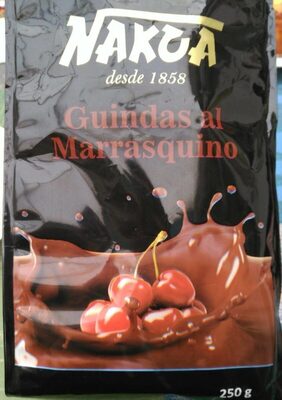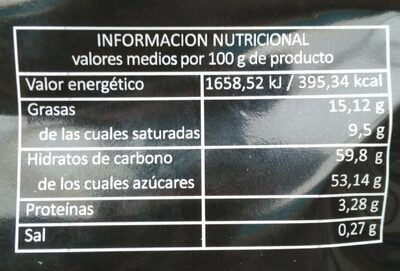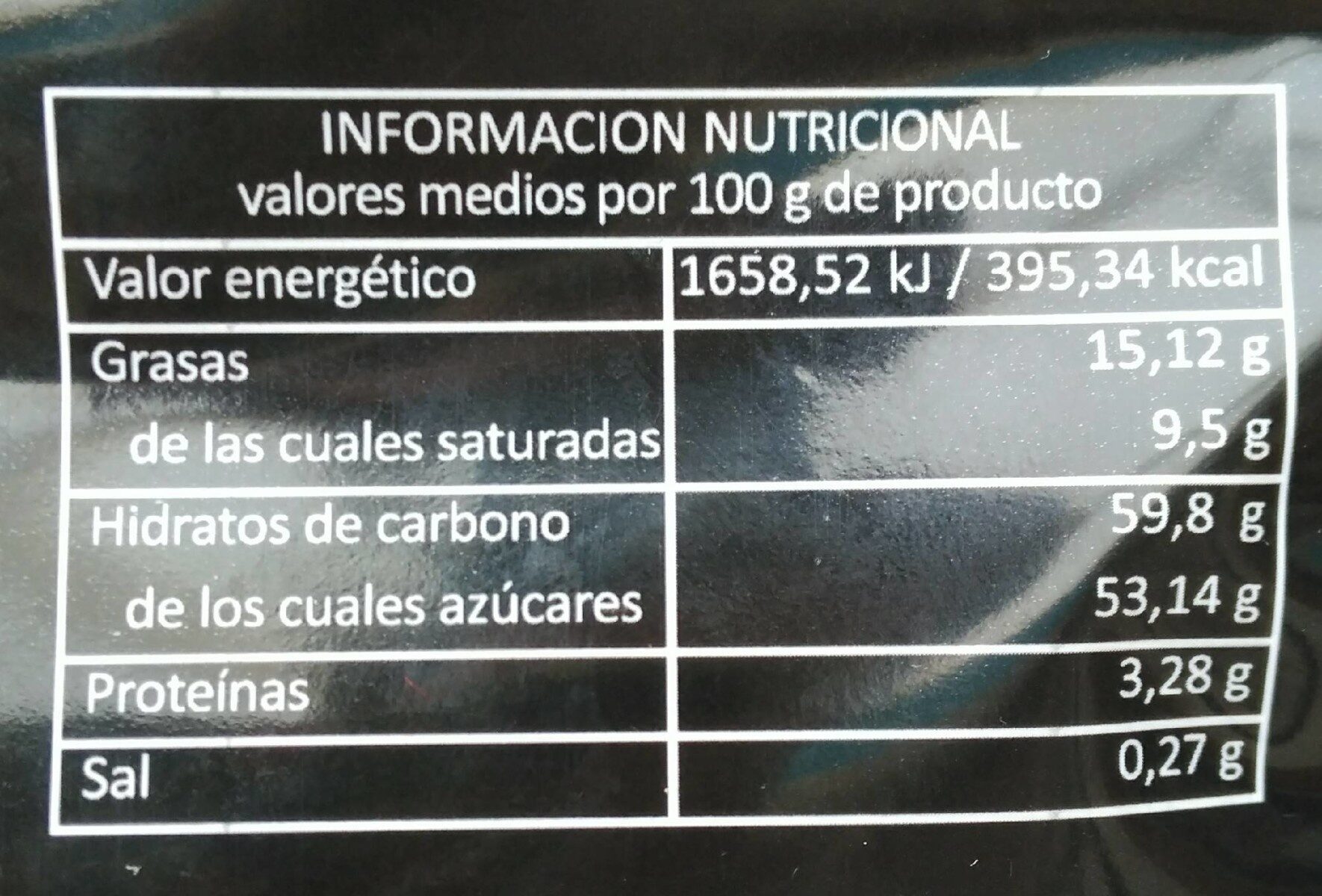Guindas al marrasquino - Nakoa - 234 g (neto sin envueltas), 250 g (neto con envueltas)
This product page is not complete. You can help to complete it by editing it and adding more data from the photos we have, or by taking more photos using the app for Android or iPhone/iPad. Thank you!
×
Código de barras: 8420158040222 (EAN / EAN-13)
Common name: Guindas (cerezas) al marrasquino recubiertas de chocolate
Cantidade: 234 g (neto sin envueltas), 250 g (neto con envueltas)
Empaquetado: es:Bolsa de plástico, es:Envoltorio de plástico
Marcas: Nakoa
Categorías: en:Snacks, en:Sweet snacks, en:Cocoa and its products, en:Confectioneries, en:Chocolate candies, en:Bonbons, en:Liqueur bonbons, en:Liquor filled chocolate covered cherries
Etiquetas, certificacións, premios: en:Vegetarian, Vegano
Lugares de fabricación ou procesamento: Utebo, Zaragoza (provincia), Aragón, España
Traceability code: ES 25.00166/Z C CE, FABRICANTE Y ENVASADOR:, NAKOA S.L.
Link to the product page on the official site of the producer: http://www.nakoa.es/productos.php?id_pro...
Tendas: AhorraMas
Country: España
Matching with your preferences
Medio ambiente
Empaquetado
Transportation
Report a problem
Data sources
Product added on by javichu
Last edit of product page on by packbot.
Páxina do produto tamén editada por ecoscore-impact-estimator, kiliweb, moon-rabbit, musarana, yuka.YTRBSEFJWU0vZXNUbmZkbHd6cjczZll0bnMrVGJVKzFFTVpMSUE9PQ.






